Nautilus 2009 Annual Report Download - page 13
Download and view the complete annual report
Please find page 13 of the 2009 Nautilus annual report below. You can navigate through the pages in the report by either clicking on the pages listed below, or by using the keyword search tool below to find specific information within the annual report.-
 1
1 -
 2
2 -
 3
3 -
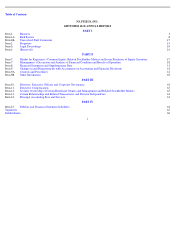 4
4 -
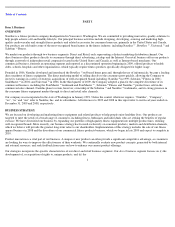 5
5 -
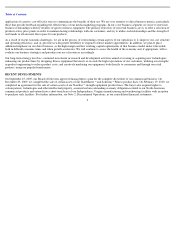 6
6 -
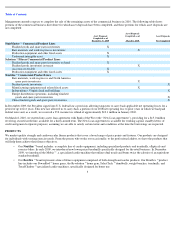 7
7 -
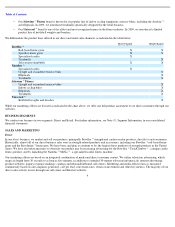 8
8 -
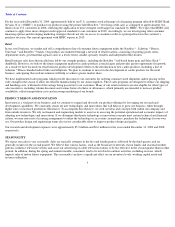 9
9 -
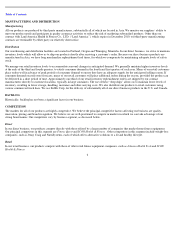 10
10 -
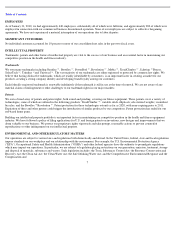 11
11 -
 12
12 -
 13
13 -
 14
14 -
 15
15 -
 16
16 -
 17
17 -
 18
18 -
 19
19 -
 20
20 -
 21
21 -
 22
22 -
 23
23 -
 24
24 -
 25
25 -
 26
26 -
 27
27 -
 28
28 -
 29
29 -
 30
30 -
 31
31 -
 32
32 -
 33
33 -
 34
34 -
 35
35 -
 36
36 -
 37
37 -
 38
38 -
 39
39 -
 40
40 -
 41
41 -
 42
42 -
 43
43 -
 44
44 -
 45
45 -
 46
46 -
 47
47 -
 48
48 -
 49
49 -
 50
50 -
 51
51 -
 52
52 -
 53
53 -
 54
54 -
 55
55 -
 56
56 -
 57
57 -
 58
58 -
 59
59 -
 60
60 -
 61
61 -
 62
62 -
 63
63 -
 64
64 -
 65
65 -
 66
66 -
 67
67 -
 68
68 -
 69
69 -
 70
70 -
 71
71 -
 72
72 -
 73
73 -
 74
74 -
 75
75 -
 76
76 -
 77
77 -
 78
78 -
 79
79 -
 80
80 -
 81
81 -
 82
82 -
 83
83 -
 84
84 -
 85
85 -
 86
86 -
 87
87 -
 88
88 -
 89
89 -
 90
90 -
 91
91 -
 92
92 -
 93
93 -
 94
94 -
 95
95 -
 96
96 -
 97
97 -
 98
98 -
 99
99 -
 100
100 -
 101
101 -
 102
102 -
 103
103 -
 104
104 -
 105
105 -
 106
106 -
 107
107 -
 108
108 -
 109
109 -
 110
110 -
 111
111 -
 112
112 -
 113
113 -
 114
114 -
 115
115 -
 116
116 -
 117
117 -
 118
118 -
 119
119 -
 120
120 -
 121
121 -
 122
122 -
 123
123 -
 124
124 -
 125
125 -
 126
126 -
 127
127 -
 128
128 -
 129
129 -
 130
130 -
 131
131 -
 132
132 -
 133
133 -
 134
134 -
 135
135 -
 136
136 -
 137
137 -
 138
138 -
 139
139 -
 140
140 -
 141
141 -
 142
142 -
 143
143 -
 144
144 -
 145
145 -
 146
146 -
 147
147 -
 148
148 -
 149
149 -
 150
150 -
 151
151 -
 152
152 -
 153
153 -
 154
154 -
 155
155 -
 156
156 -
 157
157 -
 158
158 -
 159
159 -
 160
160 -
 161
161 -
 162
162 -
 163
163 -
 164
164 -
 165
165 -
 166
166 -
 167
167 -
 168
168 -
 169
169 -
 170
170 -
 171
171 -
 172
172 -
 173
173 -
 174
174 -
 175
175 -
 176
176 -
 177
177 -
 178
178 -
 179
179 -
 180
180 -
 181
181 -
 182
182 -
 183
183 -
 184
184 -
 185
185 -
 186
186 -
 187
187 -
 188
188 -
 189
189 -
 190
190 -
 191
191 -
 192
192 -
 193
193 -
 194
194 -
 195
195 -
 196
196 -
 197
197 -
 198
198 -
 199
199 -
 200
200 -
 201
201 -
 202
202 -
 203
203 -
 204
204 -
 205
205 -
 206
206 -
 207
207 -
 208
208 -
 209
209 -
 210
210 -
 211
211 -
 212
212 -
 213
213 -
 214
214 -
 215
215 -
 216
216 -
 217
217 -
 218
218 -
 219
219 -
 220
220 -
 221
221 -
 222
222 -
 223
223 -
 224
224 -
 225
225 -
 226
226 -
 227
227 -
 228
228 -
 229
229 -
 230
230 -
 231
231 -
 232
232 -
 233
233 -
 234
234 -
 235
235 -
 236
236 -
 237
237 -
 238
238 -
 239
239 -
 240
240 -
 241
241 -
 242
242 -
 243
243 -
 244
244 -
 245
245 -
 246
246 -
 247
247 -
 248
248 -
 249
249 -
 250
250 -
 251
251 -
 252
252 -
 253
253 -
 254
254 -
 255
255 -
 256
256 -
 257
257 -
 258
258 -
 259
259 -
 260
260 -
 261
261 -
 262
262 -
 263
263 -
 264
264 -
 265
265 -
 266
266 -
 267
267 -
 268
268 -
 269
269 -
 270
270 -
 271
271 -
 272
272 -
 273
273 -
 274
274 -
 275
275 -
 276
276 -
 277
277 -
 278
278 -
 279
279 -
 280
280 -
 281
281 -
 282
282 -
 283
283 -
 284
284 -
 285
285 -
 286
286 -
 287
287 -
 288
288 -
 289
289 -
 290
290 -
 291
291 -
 292
292 -
 293
293 -
 294
294 -
 295
295 -
 296
296 -
 297
297 -
 298
298 -
 299
299 -
 300
300 -
 301
301 -
 302
302 -
 303
303 -
 304
304 -
 305
305 -
 306
306 -
 307
307 -
 308
308 -
 309
309 -
 310
310 -
 311
311 -
 312
312 -
 313
313 -
 314
314 -
 315
315 -
 316
316 -
 317
317 -
 318
318 -
 319
319 -
 320
320 -
 321
321 -
 322
322 -
 323
323 -
 324
324 -
 325
325 -
 326
326 -
 327
327 -
 328
328 -
 329
329 -
 330
330 -
 331
331 -
 332
332 -
 333
333 -
 334
334 -
 335
335 -
 336
336 -
 337
337 -
 338
338 -
 339
339 -
 340
340 -
 341
341 -
 342
342 -
 343
343 -
 344
344 -
 345
345 -
 346
346
 |
 |

Table of Contents
of our monthly payment plans or through other sources of consumer financing. These poor economic conditions could in turn lead to substantial
further decreases in our net sales or have a material adverse effect on our operating results, financial condition and cash flows.
We may need to raise additional financing if our financial results do not improve.
We sustained significant operating losses during 2009 and 2008, and if we continue to experience significant operating losses, we will need to
obtain additional debt or equity financing to continue operating. There is no guarantee that we will be able to raise additional funds on favorable
terms, if at all, or that any amount raised will be sufficient to meet our cash requirements. If we are not able to raise additional needed capital, we
would be forced to sharply curtail our operations.
Failure to successfully implement our turnaround strategies may adversely affect revenues and expenses.
To implement our business strategy, we must effectively manage our turnaround in each of our business segments. We expect to continue to
change various aspects of our business, enhance our operations, and attract, retain and manage qualified personnel. Our turnaround efforts could
place an increasing strain on management, financial, product design, marketing, manufacturing, distribution and other resources, and we could
experience operating difficulties in association with our turnaround and restructuring plans. As a result of these and other pressures, our
turnaround strategies involve many risks and uncertainties that could have a material adverse effect on our results of operations, financial
condition and cash flows.
A significant decline in availability of media time or substantially higher advertising rates may hinder our ability to effectively market
our products and may reduce profitability.
We depend on television advertising to market certain of our products sold directly to consumers. Consequently, a marked increase in the price
we must pay for our preferred media time or a reduction in its availability may adversely impact our financial performance.
Our revenues could decline due to changes in credit markets and decisions made by credit providers.
Reductions in consumer lending and the availability of consumer credit could limit the number of customers with the financial means to
purchase our products. In the past, we have partnered with financial service companies, including HSBC, to assist our customers in obtaining
financing to purchase our products. Our present agreement with HSBC helps certain customers obtain financing if they qualify for HSBC’s
private label Bowflex revolving credit card. We cannot be assured that HSBC, or others, will continue to provide consumers with access to credit
or that credit limits under such arrangements will not be reduced. Such restrictions or reductions in the availability of consumer credit could have
a material adverse impact on our results of operations, financial condition and cash flows.
Failure to collect accounts receivable from our customers could adversely affect our ability to operate our business.
Our trade receivables reflect a large and diverse customer base, domestically and internationally. Our trade receivables are generally unsecured
and therefore collection is affected by the economic conditions in each of our principal markets. Collection of receivables due from customers
outside the U.S. may also be negatively impacted by the nature, and extent of our business presence in a particular country and any rights or
protections afforded to our customers under a country’s legal system. We cannot predict, with certainty, future changes in the financial stability
of our customers or in the general economy. We periodically review the credit worthiness of our customers to help gauge collectability and
increase our allowance for doubtful accounts when collection is at risk. However, our actual future losses from uncollectible accounts may differ
from our estimates. Our ability to collect the amounts due from our customers could be impacted by various factors including: a deterioration in
the financial condition of a key customer, inability of customers to obtain bank credit lines, a significant slow-down
9
